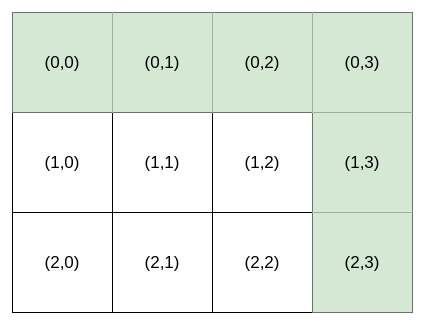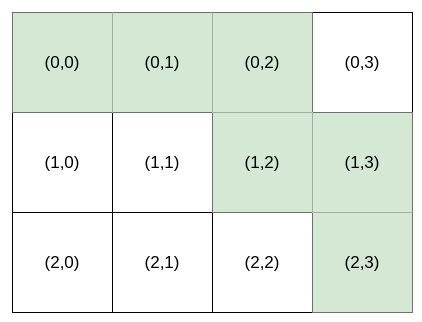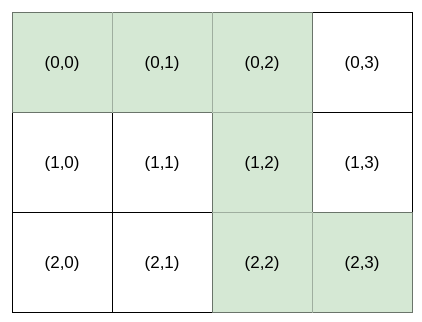Bob 站在单元格 (0, 0) ,想要前往目的地 destination :(row, column) 。他只能向 右 或向 下 走。你可以为 Bob 提供导航 指令 来帮助他到达目的地 destination 。
指令 用字符串表示,其中每个字符:
'H',意味着水平向右移动'V',意味着竖直向下移动
能够为 Bob 导航到目的地 destination 的指令可以有多种,例如,如果目的地 destination 是 (2, 3),"HHHVV" 和 "HVHVH" 都是有效 指令 。
然而,Bob 很挑剔。因为他的幸运数字是 k,他想要遵循 按字典序排列后的第 k 条最小指令 的导航前往目的地 destination 。k 的编号 从 1 开始 。
给你一个整数数组 destination 和一个整数 k ,请你返回可以为 Bob 提供前往目的地 destination 导航的 按字典序排列后的第 k 条最小指令 。
输入: destination = [2,3], k = 1 输出: "HHHVV" 解释: 能前往 (2, 3) 的所有导航指令 按字典序排列后 如下所示: ["HHHVV", "HHVHV", "HHVVH", "HVHHV", "HVHVH", "HVVHH", "VHHHV", "VHHVH", "VHVHH", "VVHHH"].
输入: destination = [2,3], k = 2 输出: "HHVHV"
输入: destination = [2,3], k = 3 输出: "HHVVH"
destination.length == 21 <= row, column <= 151 <= k <= nCr(row + column, row),其中nCr(a, b)表示组合数,即从a个物品中选b个物品的不同方案数。
impl Solution {
pub fn kth_smallest_path(destination: Vec<i32>, k: i32) -> String {
let row = destination[0] as usize;
let column = destination[1] as usize;
let mut k = k as usize;
let mut dp = vec![vec![1; row + 1]; row + column];
let mut remainv = row;
let mut remainh = column;
let mut instructions = vec![];
for n in 0..dp.len() {
for m in 1..dp[0].len().min(n + 1) {
dp[n][m] = dp[n][m - 1] * (n - m + 1) / m;
}
}
for _ in 0..row + column {
if remainh > 0 && k <= dp[remainv + remainh - 1][remainv] {
remainh -= 1;
instructions.push(b'H');
} else {
k -= dp[remainv + remainh - 1][remainv];
remainv -= 1;
instructions.push(b'V');
}
}
String::from_utf8(instructions).unwrap()
}
}

